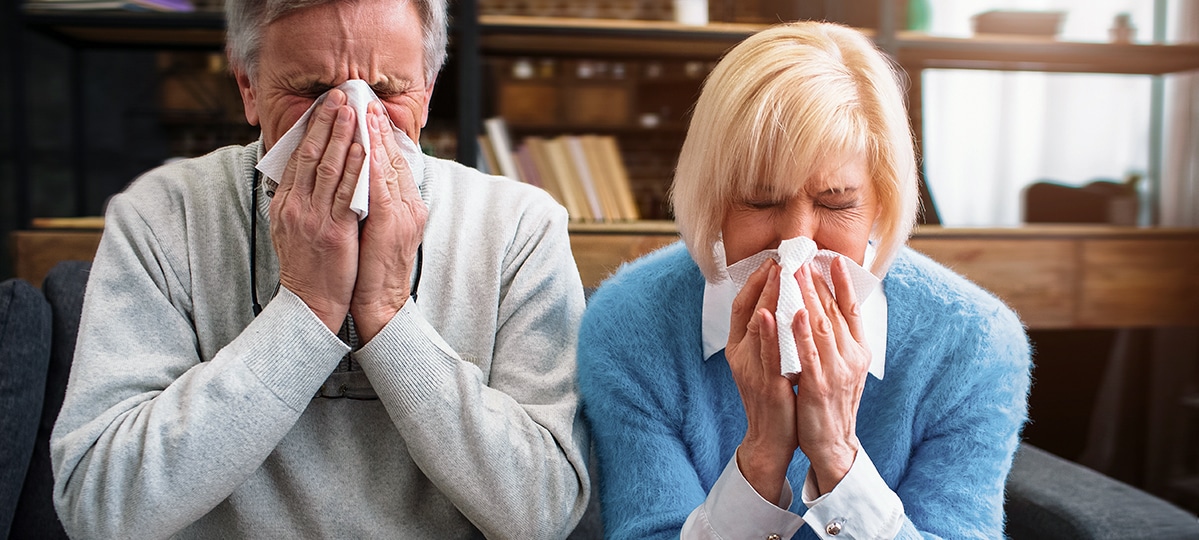Historically, when the colder months set in and you begin to experience sneezing and coughing, it would be common to conclude that you were suffering from a common cold or flu, without any need for further diagnosis. However, this year with COVID-19 still a part of our daily lives, it makes things a little complicated, as it will be harder to know what type of viral infection you are suffering from when you get a fever or start coughing. This is because there is a significant overlap between the signs and symptoms of cold, flu and COVID-19.
While different viruses cause the three contagious illnesses, they have similar symptoms that can make it challenging to know what you’re suffering from when you feel a spike in fever or a tickle in your throat. However, despite having some similarities, the three ailments also differ in some quarters. This article will help you understand how you can tell the difference between cold, flu and COVID during the flu season.
Causes and Symptoms
Cold
This viral infection affects the upper parts of the respiratory system. Over 200 distinct viruses can cause common colds, but the Rhinoviruses are said to predispose between 30 and 50% of colds. Its symptoms are milder when compared to those of the other two viruses. They include:
- sneezing
- Dry or wet cough
- Sore throat
- Watery eyes
- Stuffy or runny nose
- Headaches
- Coughing
Flu
Influenza (Flu) is a viral infection that affects both the lower and upper respiratory systems. It has more severe symptoms than flu, including:
- Cough
- Sore throat
- Headaches
- Fatigue
- Vomiting and diarrhea
- Runny or stuffy nose
- Fever or feeling feverish/chills
- Muscle and body aches
COVID-19
This is a new strain from the coronavirus family. The single-stranded, positive-sense RNA SARS-CoV-2 is a deadly virus that potentially leads to COVID-19. Its symptoms include:
- Dry cough (sometimes very severe)
- Shortness of breath
- Headaches
- Difficulties in breathing
- Loss or change in taste and smell
- Skin reactions
- Sore throat
- Muscle pains and body aches
- Chest pains
- Vomiting and diarrhea
- Fatigue
What are the Main Differences between the Three?
Signs and Symptoms
While the three illnesses seem to have several overlapping symptoms, the degree of severity may differ from one ailment to the next. For instance, the common cold signs and symptoms are not as severe as those of flu and COVID-19. Flu may exude mild to severe symptoms and complications. Among the three, COVID-19 is the viral infection with the most devastating consequences.
COVID-19 may also include other signs and symptoms that are absent in the other two illnesses. These include:
- Chest Pains
- Loss of taste or smell
- Difficulty in breathing
- Skin reactions
How Contagious
Although individuals with cold and flu can spread the ailment to others, the infections are not as contagious as COVID-19. While it is not yet defined for how long one can spread the Coronavirus, it can be spread even before the first signs manifest. Flu and colds might be contagious from one to two days, but current data shows that COVID-19 patients can be infectious for even 10 days after the first sign and symptoms manifest.
Implications
Common colds are milder and don’t necessarily lead to serious health problems. However, flu and COVID-19 may predispose severe health complications. Both can lead to:
- Pneumonia,
- Respiratory failure
- Organ failure
- Inflammation of the brain, heart, and muscle tissues
- Chronic medical conditions (involving the heart, lungs, and nervous system)
- Sepsis
- Cardiac Injury
However, Coronavirus may lead to additional complications such as blood clotting in the brain, heart, legs, and lungs, and multisystem inflammatory syndrome in children (MIS-C).
People at High Risk
While people with underlying conditions, pregnant women and the elderly are at a higher risk of any disease, the degree of severity differs for cold, flu and COVID-19. Young kids are more prone to colds and flu and may display more severe symptoms.
Older citizens are at a high risk of Coronavirus. Data collected during the pandemic indicate that most deaths recorded are for individuals with underlying conditions and those aged 50 years and above.
Incubation Period
Once you get exposed and infected with a common cold, you can take 24-72 hours to start showing signs and symptoms.
On average, the signs and symptoms of influenza manifest after two days. However, it can even take four days for you to see the first signs.
The period between exposure and the manifestation of the Coronavirus’s first signs and symptoms is five to six days, but it might also take up to 14 days.
Vaccination and Treatment
There is no vaccine for common colds since there are more than 200 different viruses that cause colds. Treatment is mainly through over-the-counter drugs and plenty of fluids.
When it comes to the flu, there are plenty of FDA-licensed vaccines that can protect you against the virus. There are also FDA-approved antiviral drugs to treat the ailment.
While vaccine trials are still underway, there is no licensed vaccine for COVID-19 currently. Additionally, there is no defined treatment method for treating Coronavirus. However, there are standard supportive medical care procedures used to relieve its symptoms and complications.
Recommendations
Although knowing the differences between cold, flu and COVID-19 is essential, the only way to be sure of what you’re suffering from is through testing. You may experience some mild symptoms such as fever and dry cough and think that it’s just a typical cold, only to discover that it is either flu or COVID-19. Also, ensure that you continue washing your hands frequently, practicing social distancing, disinfecting surfaces, wearing masks, and avoiding crowded areas.
If you live alone, a Medical Alert system can help to protect you in the event you come down with any of these all-too-common conditions. If you experience severe symptoms, such as chest pains or shortness of breath, simply push your help button and our emergency response operator will dispatch help.




